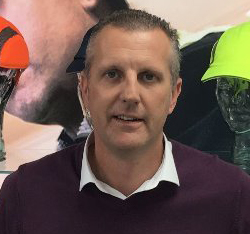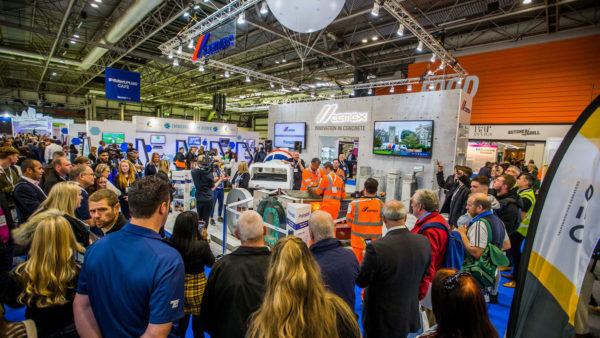
A new CM survey in association with helmet safety technology company Mips has revealed a lack of training and awareness around head injuries and their possible causes. Head injury expert Chris Tidy explains why the construction industry needs to understand the risks.
We’ve all seen the headlines about head injuries in sport: Football players heading the ball, rugby players, NFL players, boxing head injuries, all leading to potentially severe cases and long-term issues.

But most of us face the risk of head injury in work, as well as in play. Some face this risk more than others, like those who work within the construction industry or utilities sector. CM has teamed up with Mips, a helmet-based safety technology company, to conduct research on head injuries in construction.
Most of us understand that a head injury can be a killer with the effects either showing immediately or in some cases 48 to 72 hours later. The damage can cause short- or long-term issues and for some people it can change their personalities completely.
On modern-day construction sites, there is widespread awareness of the need to wear a hard hat, but the results of this survey show a clear majority think that not enough is being done to inform the workforce of the specific risks around head injury.
Concussion is often referred to as mild head injury and while most mild head injuries result in no long-term damage to the brain, it can cause temporary disruption to brain function that can last for a matter of hours to days, weeks or even months. Less than a third (27%) of survey participants were correct in answering that up to 75% of Traumatic Brain Injury (TBI) cases result in a concussion. The rest thought the proportion was lower than this. In fact, the most common type of TBI is concussion, which accounts for up to 75% of all TBI cases.
Reporting and risk
The reason for this is perhaps because the industry reports on accidents and not injuries, hence why the injury portion is inaccurate. It would be better if more emphasis were placed on the exact injury information and this was logged in detail. We could then understand the injuries more and help to mitigate them.
Just over half (51%) of respondents don’t think enough is being done to inform the workforce of the risks around head injury. In order to prevent head injuries onsite we must first understand the risk. This will involve educating the supply chain and changing the whole industry perspective.

Worryingly, the majority surveyed (40.3%) either think that hard hats aren’t being replaced after significant impact or within 5 years or simply don’t know (31.7%). This is not only about educating the workforce, but also about best practice when it comes to wear and care of their hard hats. The wearer needs to understand that the humble hard hat could save their life, so it is within their interest to look after them.
Meanwhile, only 15% of respondents said PPE is checked frequently. This is concerning. When wearing something that can protect lives, checks to make sure it is in working order should be made on a regular basis. Remember PPE is not just a piece of plastic, it’s there to protect people.
The danger of rotational forces
When asked if they knew which kind of forces the brain is most sensitive to, 13.1% of respondents answered that it was linear forces, while 14.1% answered rotational forces and 70% said it was both. A further 2.6% said none of the above. In reality, the human brain is more sensitive to a rotational motion compared to a linear motion.
The reason is that the brain is very weak when subjected to shear forces. Because it is similar to water, it is more sensitive to rotational acceleration. A pure linear acceleration could damage the brain, due to it not being a perfect sphere, but then the impact energy would need to be much higher than the energy that could cause a rotational motion, and those forces can transfer to your brain.
The fact that half of respondents (50.7%) claim to be unaware that a hardhat or safety helmet is tested to the EN 397 standard shows that more needs to be done to educate the industry on the effectiveness of current testing standards and safety practices around wearing hard hats. Everyone needs to understand that there are limits to the protection they are wearing, and those limits are derived from the standard.
Hard hats are currently evaluated with linear forces, which predominantly represent dropped objects. But accident statistics show that more slips, trips and falls from height or on the same level occur, which could represent a rotational injury.
“The fact that half of respondents (50.7%) claim to be unaware that a hardhat or safety helmet is tested to the EN 397 standard shows that more needs to be done to educate the industry on the effectiveness of current testing standards and safety practices around wearing hard hats.”
When respondents were asked what are the top three types of accidents that most frequently lead to TBI cases, the most popular options were slips, trips and falls (76.6%), falls from height (75.7%), and struck by moving object (70.8%). This shows that the participants understand the severity of injuries that can occur as a result of these incidents. It is almost nine times more frequent to acquire a long-term injury from a fall than to get the same injury outcome from a falling object.
A significant majority of respondents (75%) said there was no requirement on operatives in their company to wear chinstraps. Meanwhile two thirds (66%) noted that there was resistance among the workforce to using them. One of the most important things to remember is that for a hard hat to protect you, it must stay on your head. In the case of dropped objects striking the head, the hard hat will most likely stay on and mitigate the risk of the impact.
But the initial acceleration involved in a slip, trip, or fall, either from the same level or one level above is likely to affect the hard hat’s stability on the wearer’s head. If the hard hat slip ratchet or wheel ratchet is not tight enough, then it may well be lost at the start of the incident. Chinstraps can save lives, which is why they are legislated on some hard hats. Please remember: ‘If it’s not on your head, it can’t protect you!’ As much as most participants resisted wearing chinstraps, they could and most probably would save lives.
Finally, it was encouraging to note that a majority of respondents rated comfort, protection and ventilation as important factors when wearing a hard hat, whereas the majority did not consider style and brand to be as important. It’s vital that wearers feel comfortable in their PPE, which may be worn all day. But we still have a long way to go as far as education around head injuries is concerned.
Mips Webinar link: Join Mips for the webinar Understanding the risks around head injuries in construction to understand the role hard hat technology can play, how the Mips® safety system works and an understanding of the risks from rotational forces caused by head impacts in construction.
Chris Tidy has his own specialist training and consulting company and works for Mips as a product/training specialist.









